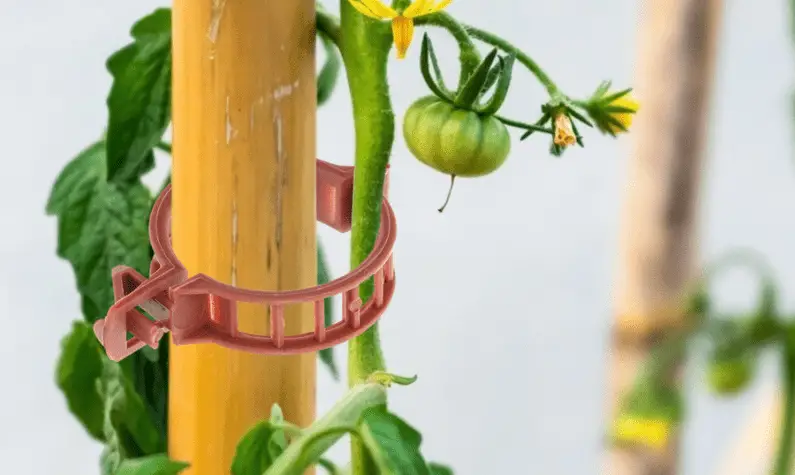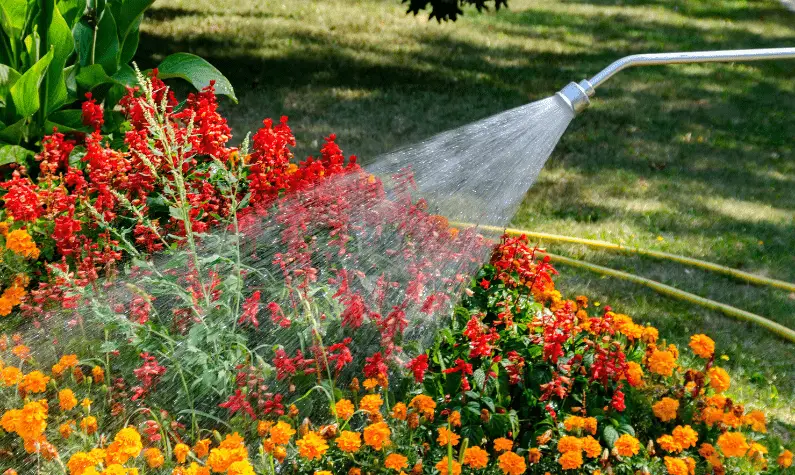How To Make Plant Stems Stronger: Growing houseplants in the yard is a delightful experience, but the plant stems can occasionally become long and spindly due to the growing conditions. As a result, the plant becomes weakened and vulnerable to collapse under its weight. Making plant stems stronger is a challenge that many gardeners are faced with. There are various methods for strengthening plants, and not all of them are effective for all types of plants, which eventually leads to the topic of how to make plant stems more resilient to damage.
How to make plant stems stronger will be the topic of discussion in this article. Plant stems are a crucial component for the growth and development of plants. It is possible that plants with weak, drooping stems are not developing as effectively as they could be. If you want to keep those delicate little plants alive, this article will tell you how to reinforce their stems to ensure their survival!
Contents
- How to Make Plant Stems Stronger? Ultimate Guide
- Providing a Support
- Ensuring Air Circulation
- Trimming Weak Branches
- Boosting Humidity
- Providing Proper Temperature
- Using Good Quality Soil
- Providing Good Drainage Facility
- Adding Nutrients to the Soil
- Using the Right pH Level for the soil
- Controlling the Direction of Growth
- Fruit Load Spreading Out
- Controlling and Prevention of Pest and Diseases
- Providing Sufficient Light
- Protecting the Plant Stem
- Providing Sufficient Water
- Conclusion: How To Make Plant Stems Stronger?
- How to make the seedling stem thicker?
- Can I use baking soda for my plants?
- Which fertilizers help the growth of roots?
How to Make Plant Stems Stronger? Ultimate Guide
Providing a Support
One of the most important things you can do to make plant stems stronger is to give them the proper support they require. This can be accomplished by using various gardening tools or materials that aid in the appropriate support of the plants. Stakes, cages, and a garden trellis are examples of plant supports that are often employed. These instruments provide plants with the support they require to produce strong stems.
These are pointed sticks placed into the ground near the plant’s stem to provide support. Stakes are used to give support to the stem of a sagging plant. This helps to strengthen the stems, allowing for more vigorous development. When it comes to sustaining plants that cannot hold their own weight, they are extremely beneficial. Climbing plants benefit greatly from the support provided by picket fences and trellis structures.
Ensuring Air Circulation
Plants require adequate air circulation to thrive. Plants can get weakened if items in their environment obstruct their air circulation. As a result, it is critical to guarantee adequate air circulation around your plant. Maintain free air circulation between the plants and any nearby obstacles, such as walls or fences.
If insufficient air circulation and movement are insufficient, plant stems and their linkages to the root system may be more susceptible to disease and infestation. Allow for plenty of airflows so that the plants may dry out more quickly after rainstorms or watering sessions. If you follow these simple recommendations, you can avoid bacterial wilt, downy mildew, grey mold, and even powdery mildew.
Trimming Weak Branches
Pruning the plant’s weak branches is a good idea. Dead or diseased tissue is removed as a result, making it easier to maintain a clean and disease-free environment on the plant. It should be clipped back to its original position to guarantee that the plant’s strong branch points are not compromised.
Boosting Humidity
Plants require a constant supply of fresh air as well as adequate humidity. You may strengthen the stems of your plants by keeping them away from powerful gusts of wind and providing them with adequate humidity.
The quantity of humidity required varies depending on the type and variety of plants you are cultivating, but in general, most plants require between 50 and 70 percent humidity to thrive. If the humidity level is low, consider placing the plant on a saucer filled with pebbles and water to increase the humidity. The evaporation from the pebbles and saucers will raise the humidity level around the plant, which will benefit the plant.
Providing Proper Temperature
The temperature of a plant has a significant impact on its overall health and growth of the plant. Make sure the temperature of your plants is neither too high nor too low since this can cause the stems to weaken and possibly hinder their development.
Using Good Quality Soil
In order for plants to grow robust stems, they require good-quality soil. Ensure that you are using the appropriate type of soil (for example, rich compost) for your plant and that you are not utilizing chemically treated soils around the plants. Chemicals can burn your plant’s roots and reduce its ability to absorb nutrients, weakening the stem and leaving it vulnerable to disease and decay.
Providing Good Drainage Facility
This necessitates the use of suitable soil that allows for enough airflow and drainage, which can be achieved by mixing gravel or sand with the potting mix. Also required is avoiding overwatering to avoid the roots drowning and rotting in an accumulation of water. Keep these suggestions in mind when watering your plants to ensure that the stems are as healthy as possible.
Adding Nutrients to the Soil
Plants require various nutrients from the soil to grow and develop to their full potential. There should be an appropriate supply of nutrients in the soil to provide the plants with all they require for growth.
The most effective way to ensure that your plants receive all of the nutrients they require is to fertilize them; however, if this is not possible, you can try adding organic materials to the soil instead. These include manure, compost, or humus, which aid in drainage improvement and microbial activity stimulation.
According to the USDA, a plant with yellow leaves may be suffering from a nutritional deficit. It is possible to fix this problem and increase the overall health of your plants with the application of fertilizers.
Using the Right pH Level for the soil
Plants typically have a preferred pH, and the pH of your soil should be consistent with their requirements. If this is not the case, an acidifying fertilizer can be used to get the levels closer to what they wish. Also, avoid overfertilizing because it can damage plant stems, resulting in skeletal growth and weak stems, which makes plants more susceptible to disease in the future.
Controlling the Direction of Growth
Additionally, by managing the direction of growth, you can assist in strengthening your plant’s stem. As a result, it would be beneficial if you linked the shoots together to offer greater support for the stem. Use plant ties or some comparable material for this function if you don’t have access to any other materials.
By following these simple methods, you will be able to control the strength of your plant stems and prevent them from becoming harmed. Vertically emerging branches should be pruned and tied to their stake using twine, wire, or whatever else you have on hand to ensure that the plant’s energy is directed vertically rather than horizontally.
Fruit Load Spreading Out
This prevents the stems from collapsing after flowering when they are bearing a heavy fruit load, as in the case of peppers and tomatoes, for example. Keep pruning your plants on a regular basis if they have a strong drive to shoot out a large number of branches rather than grow higher.
Controlling and Prevention of Pest and Diseases
Keeping pests and diseases under control is important because they can cause major damage to plant stems. As soon as you notice any infected branches or leaves, remove them immediately. To avoid further infections, try using organic pesticides such as neem oil or pyrethrin on the infected area.
Providing Sufficient Light
Check to be that your plant is receiving enough sunshine to thrive healthily. According to the type of plant, the amount of light required might range from four to six hours each day, while some grow best when given as much as eight hours per day.
Protecting the Plant Stem
Frost and other winter weather conditions can also impact the general health of your plants. For example, if they are planted in low-lying regions, they may be more susceptible to frost damage due to their close proximity to cooler air. In order to avoid this, wrap them in a blanket or other sort of insulation that will also protect them from the wind during the colder months.
Providing Sufficient Water
Stress to your plant stems can be caused by either too much or too little water. The soil should be moist but not drenched, and you should always allow the soil to dry completely before watering it again.
Conclusion: How To Make Plant Stems Stronger?
You will see thicker stems on your plants if you provide them with adequate amounts of sunlight and water and adequate aeration, nitrogen, and space. The most common reason for your plants’ lack of strong stems is a lack of sufficient sunlight. In order to develop your plants more successfully, you must first understand their requirements. If you discover how to make plant stems stronger, you will be able to develop healthier plants that are more resistant to pests and diseases. Throughout the growing season, you’ll see a decrease in the number of plants that succumb to the elements.
Frequently Asked Questions (FAQ)
How to make the seedling stem thicker?
If your seedlings are already too tall, you can force them to grow thicker by gently brushing your hands over them several times a day or by setting up an oscillating fan to gently blow on them for a few hours every day for a few days. Learn more about how much water per gallon of soil?
Can I use baking soda for my plants?
Baking soda applied to plants appears to have no detrimental effect and, in some situations, may even aid in inhibiting the blossoming of fungus spores. Even though it is most effective on fruits and vegetables that have been picked off the vine or stem, regular treatments during the spring can help to reduce the occurrence of illnesses such as powdery mildew and other foliar diseases.
Which fertilizers help the growth of roots?
Phosphorus and potassium are the two most essential nutrients for plant root growth, and they work together. To be more specific, they help plants to generate a dense network of new roots while simultaneously strengthening old roots as they grow.




